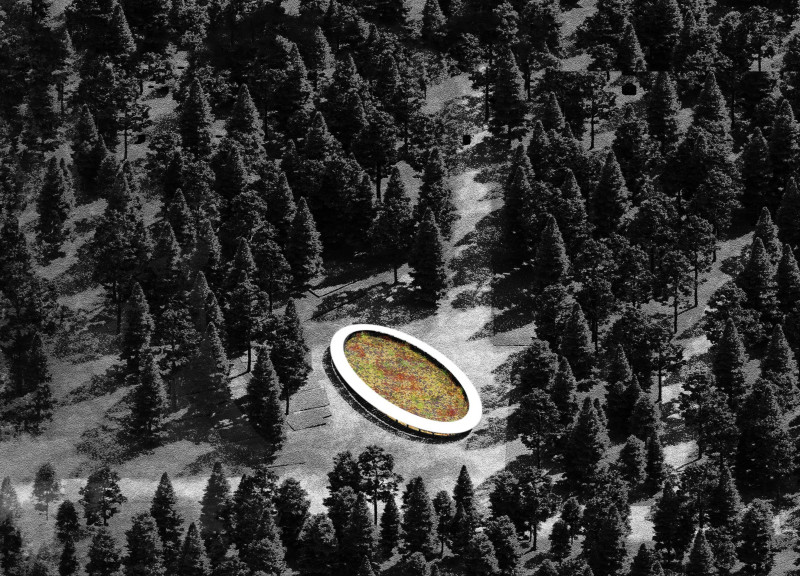5 key facts about this project
The Veiled Garden is designed as a place for reflection on the connections between life, death, and nature. Located in a serene environment, it functions as a space for remembrance and contemplation. The overall concept brings attention to the relationship between the living and the departed, allowing visitors to engage with their thoughts and feelings about mortality.
Conceptual Framework
At the center of the garden lies an urn, representing the link between two realms. This important feature acts as a focal point for visitors to pause and think. The design invites a quiet experience, where interactions with the urn encourage reflections on life's fleeting moments and the lasting impact of memories.
Plant Selection
The choice of plants in the garden supports themes of life and renewal. Species such as Chrysanthemum 'Overture' and Achillea millefolium are included for their symbolic meanings. This selection creates a rich tapestry of color and texture, enhancing the garden's beauty while reinforcing the natural cycles of life and death. Each plant contributes to a sense of growth and continuity.
Material Considerations
The structure relies on various materials to ensure stability and support. These include metal connectors and horizontal steel rebar, which provide strength while maintaining a simple appearance. Further elements, like reinforced concrete columns and compacted gravel, help shape the garden’s function, creating a space that works well within its natural surroundings.
Spatial Layout
The design of the garden allows for easy movement and engagement. Pathways guide visitors through the area, leading to seating spots that foster personal reflection. The arrangement of these elements creates a calm atmosphere, encouraging people to connect with nature and their thoughts. careful placement of features enhances the experience, making it a suitable place for those seeking peace.
Light plays an important role in the experience of the garden. Sunlight filters through the leaves, casting shifting shadows on the urn. This natural dance of light reflects the passage of time, offering a reminder of the cycles of life.






















































